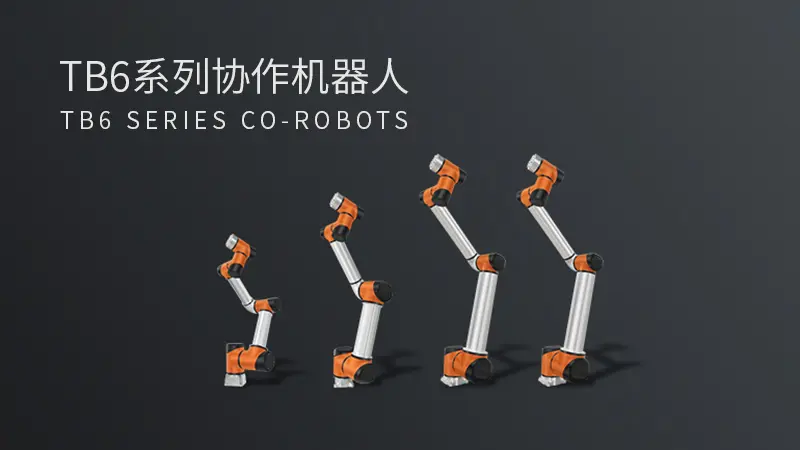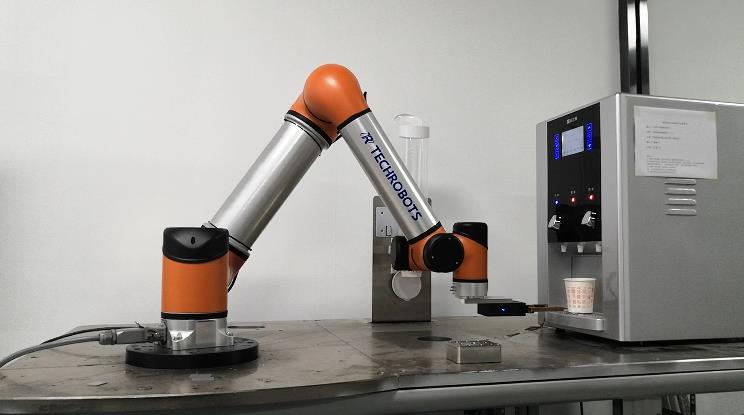2021 co-robots are about to usher in explosive growth
Date:2021-04-09In recent years, the most popular word in the robotics industry is "cobot". Since August last year, many collaborative robot companies such as Luoshi, Feixi, Jieka Robot, and Yuejiang Technology have exposed financing information; Just last month, ABB launched two new collaborative products. China Robot Network participated in the entire new product launch conference. At the upcoming Munich Shanghai Electronic Production Equipment Exhibition, Jaka Robot and Luoshi Robot will be held at Shanghai New International The Expo Center launched its new collaborative products, and then the upstart of domestic collaborative robots, Tyco Intelligence, has also promoted seven-axis collaborative robots. This time the co-robot financing is frequently exposed, and new products are frequently released. It can be described as "good and lively"!

Why are collaborative robots so popular? We must know that industrial robots are inseparable from factory automation, and collaborative robots are another clear stream in industrial robots. The author has integrated collaborative robots with "lightweight, safety, perception, human-machine collaboration, and convenient programming." It sorts out the four major advantages of collaborative robots compared to general industrial robots, which are lightweight, safe, convenient, and cost-effective. Compared with traditional industrial robots, the application fields of collaborative robots are broader. Food service, household, retail, education, medical care, etc. are all important applications of collaborative robots. It can be said that collaborative robots are an important indicator for the development of the robotics industry from automation to machine intelligence.
"Safety-high efficiency" technical bottleneck or will break through
At the beginning of the birth of industrial robots, its safety has not been guaranteed. In 1978, when a cutting robot in a factory in Hiroshima, Japan was cutting steel plates, the robot treated a worker on duty as a steel plate, which led to a tragedy. The safety of industrial robots has become a problem that all robot developers have been working hard to solve. problem. Today, industrial robots in modern factories are still bulky and not stable enough. People regard them as "steel monsters" for safety reasons. They are kept in iron cages for operation, and industrial robots and humans have been maintained. An insurmountable "safe distance".

However, humans have never given up on the development of safer industrial robots that can "human-machine collaboration" get along with humans friendly. But since 1996, the world’s first commercial human-machine collaborative robot WAM manipulator was born in the United States. Compared with industrial robots, collaborative robots have another core problem that plagues developers, that is, to achieve safety. At the same time, the production speed must be reduced. In automated production, efficiency is the most critical factor. Once a collaborative robot is inefficient, everything is on paper, and it is impossible to achieve high popularity.
Such a paradoxical proposition has appeared. It is that "safety-high efficiency" cannot be mutually transformed and integrated. Industrial robots are more efficient but not safe enough. The emergence of collaborative robots makes production safer, but the speed is always too slow and not efficient enough. .
However, in recent years, there has been a blowout of collaborative robots. In 2014, according to relevant foreign statistics, the global collaborative robot market was about 100 million US dollars at that time, and it was growing at an annual rate of 50%. In 2016, the actual growth rate of collaborative robots was much better than expected. The year-on-year growth rate has exceeded 50%. In the Chinese market, the year-on-year growth rate of collaborative robots reached 109.09%. Such vigorous development also reflects the favor of "lightweight, safe, convenient, and cost-effective" collaborative robots in modern automated production.
Where there is demand, there is a market. Therefore, more and more companies are making a fuss about the efficiency of collaborative robots. At the end of February this year, ABB launched a new product SWIFTI™ collaborative robot, and put forward the concept of "intermittent collaboration", that is, when no one approaches, the robot can operate as fast as an industrial robot, at five meters per second, at the same speed as a normal collaborative robot. When the robot senses that a human is approaching, it can slow down and cooperate with the human. Of course, "intermittent collaboration" is just the beginning. I believe that when major robotics companies release new collaborative products in the future, there will be more solutions to optimize the speed of collaborative robots...
Four advantages help multi-domain applications to achieve automation
Now, in the field of robotics, we are attending major exhibitions. Robot companies use their own robots to make coffee. During the coffee break, we deliberately incorporate robotic elements to promote robot products from various companies. There is no shortage of them. The figure of collaborative robots. In fact, it is not difficult for the robot to complete the action of brewing coffee as long as the appropriate program is input for the collaborative robot. Search the Internet at will, AUBO, Siasun, Elit, Jieka, Tyco and other companies have launched collaborative coffee-making robots under their brands.

But collaborative robots are not just for making coffee. Robot developers are constantly improving the convenience of collaborative robots. Now as long as the collaborative robot enters the programming program and drags the robot to make an action, the collaborative robot can continue to repeat perfectly. Let more companies use robots instead of humans to complete repetitive, monotonous and dangerous production processes, thereby achieving automation, improving production efficiency, and giving employees time to engage in more valuable work.
At the beginning of the article, the author compiled the four major advantages of collaborative robots, namely, "lightweight, safe, convenient, and cost-effective." We have repeatedly mentioned its advantages in safety and convenience. In terms of light weight, collaborative robots The advantages of the robots have undoubtedly increased the application rate of robots in various fields, and the lower price than industrial robots can also allow enterprises to quickly recover costs and help more small and medium-sized enterprises realize their dreams. Although collaborative robots were originally intended to replace the existence of industrial robots, the satisfaction of these four major advantages even inadvertently allowed collaborative robots to overlap with service robots and special robots in their application fields.
The actions of collaborative robot companies frequently catalyze market demand
According to data from the International Federation of Robotics (IFR), the installations of industrial robots and collaborative robots in the Chinese market from 2017 to 2019 were 389,000, 406,000, 355,000 and 11,000, 16,000, 1.8 Million units. Under the dual impact of the global manufacturing decline and the reduction in demand from major terminal industries such as automobiles and electronics in 2019, the Sino-US trade war, and the new crown epidemic, the overall market revenue of robots has shown negative growth for the first time in many years, but collaborative robots are still stable rise.
As analyzed in the previous article, collaborative robots are more widely used than industrial robots. As far as the author knows, at present, the internationally renowned cosmetic brand Amorepacific Group has used collaborative robots into its company's packaging production line. The collaborative robots can identify parts and objects and package them with good results. According to statistics, in 2018, the market size of the cosmetics industry in the United States, China, Japan, and South Korea was 895, 620, 375, and 13.3 billion U.S. dollars, respectively, and the market was huge.
In addition to cosmetics companies, many fast-selling commodities such as food and daily necessities need to be packaged. If collaborative robots can be used in major commodity packaging fields alone, then in this application field alone, the size of collaborative robots will be Is showing a growth of tens of times. However, the application of collaborative robots is not only on the production line. Now even the most demanding massage field has been trying to apply collaborative robot massage. Collaborative robots are really widely used!
From the current point of view, although collaborative robots can be used in many fields, their size is still small. The reason is that the market is still in the wait-and-see stage. The market is in the wait-and-see stage. It is not that there is no demand, but there is demand, but there are still some worries in the mind. However, with the continuous launch of new collaborative robot products this year, orders between robot companies and customers will also show a certain degree of growth, which undoubtedly has a catalytic effect on market demand. When collaborative robots further develop in new application scenarios and breakthroughs are achieved in technical bottlenecks, the reputation of collaborative robots will inevitably get better and better. Therefore, I believe that in 2021, customer demand for collaborative robots may have a domino effect, and collaborative robots may usher in explosive growth!
Previous Article: 8 advantages of co-robots
Next Article: Co-robots make automation easy and fast